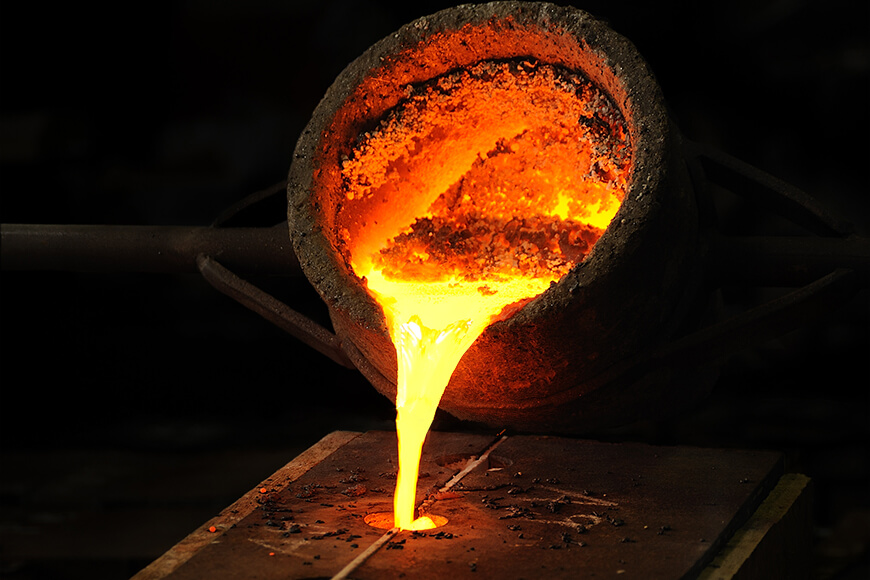

The higher carbon content of cast iron means that it solidifies as a heterogeneous alloy, and therefore has more than one microcrystalline structure present in the material. Steel contains less than 2% carbon, which enables the final product to solidify in a single microcrystalline structure. However, there are significant differences. Due to the presence of carbon in cast iron, it may sometimes be confused with steel.

Differences between wrought iron and cast iron can also be found in the details of chemical structure and physical properties. Small amounts of manganese and some impurities like sulfur and phosphorous may also be present. There are also differences in compositionâcast iron contains 2â∴% carbon and other alloys, and 1â∳% of silicon, which improves the casting performance of the molten metal. The primary difference in production between wrought iron and cast iron is that cast iron is not worked with hammers and tools. Cast iron is a family of metals produced by smelting metal, and then pouring it into a mold.

Casting is most often used for making complex shapes that would be difficult or uneconomical to make by other methods. The metal and mold are then cooled, and the metal part (the casting) is extracted. In 2022, the market is growing at a stable rate and with the increasing adoption of tactics by key players, the market is predicted to rise over the projected horizon.Ĭasting is a process in which a liquid metal is somehow delivered into a mold that contains a hollow cavity of the intended shape. The Global Iron Casting market is expected to growth at a significant rate during the forecast period, between 20. Get a Sample Copy of the Iron Casting Market Report 2022 The major players covered in the Iron Casting market report are:


 0 kommentar(er)
0 kommentar(er)
